Julie Kagti – A Tapestry Weaving Artist Who Organizes Weaving Workshops
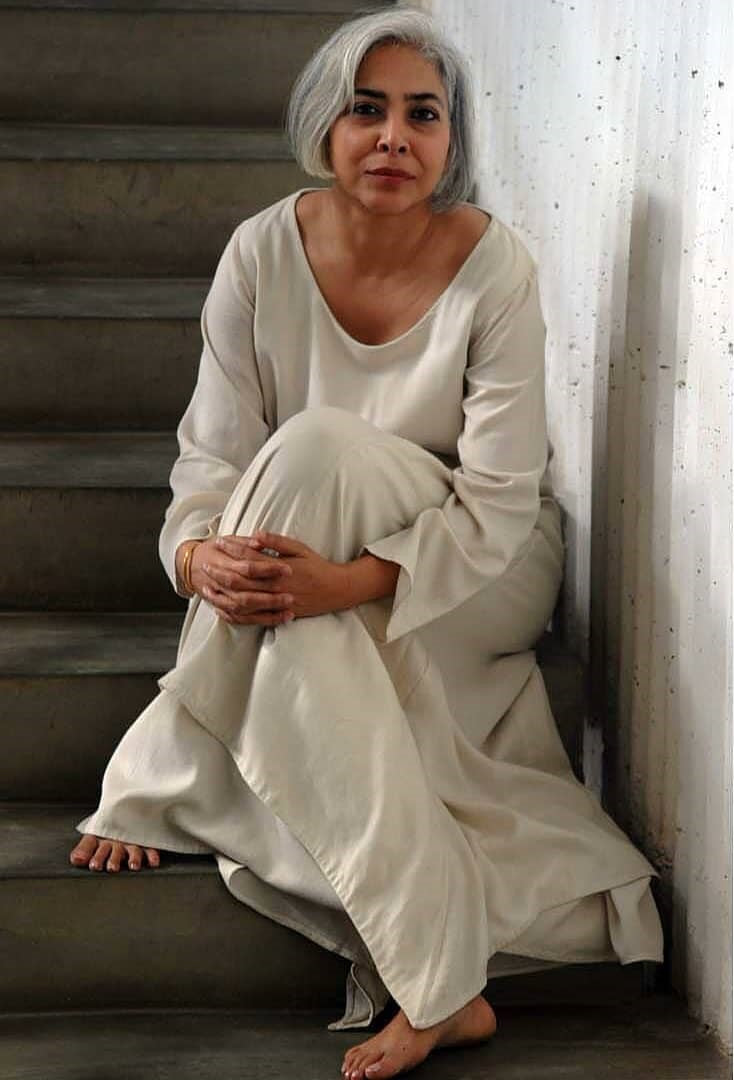
Social media is a great meeting ground and some connections happen which look like they were meant to be. One such was our meeting Julie Kagti, a textile artist from Assam who has designed and supplied woven sarees to the big names in fashion retail, has conducted weaving workshops for the urbanites and has recently stepped into the world of tourism by organizing niche tours focused on the regional culture of Northeast India. An eclectic mix of interests.
Julie found Muezart and Zizira, our sister concern, on Instagram.
“I am really happy to see these community-based ventures coming up in a region that really needs them and help maintaining sustainability at the rural level”. She messaged.
Miranda who followed up from Muezart was charmed by Julie’s artistic skills, “I fell in love with her work the first time I lay my eyes on her IG feed. Scrolling through her feed, you can quickly get a sense of a true artist.”
The common threads that connected Muezart and Julie were – she is also from the Northeast, has worked with weavers, cares for sustainability, she is a fabric artist and has worked with fibers of various kinds, including Eri silk fiber.
We wanted to share Julie’s story with you, a textile artist working to promote the Indian craft sector and curating tours focused on culture. Here it is. The story is based on an interview with her.
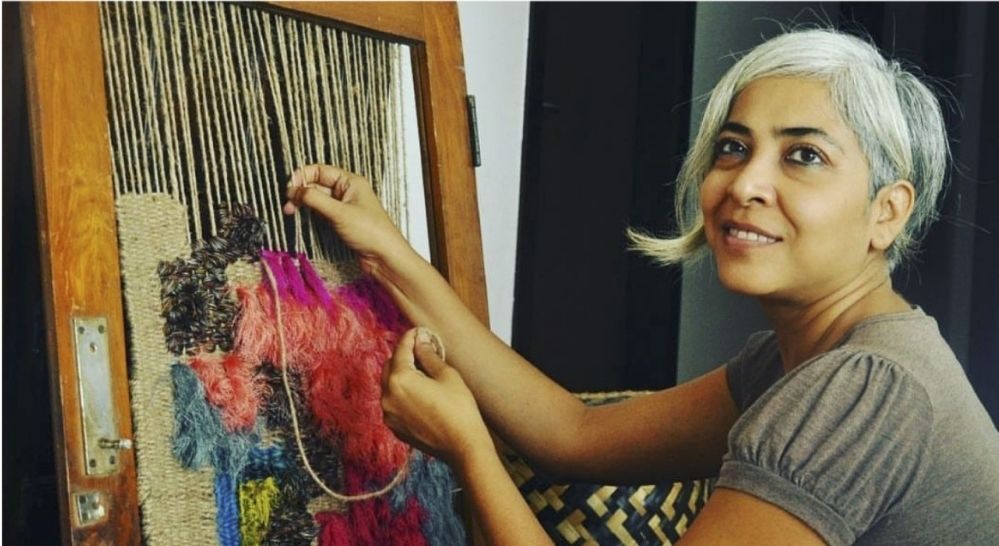
Here is Julie working on a tapestry weaving project using Jute, Eri silk and other silk yarns.
How Come a Window Frame as a Loom?
“Ha Ha. Necessity is the mother of invention. A few years ago I had taken a sabbatical from commercial textiles to raise my two children and I wanted to keep in touch with the craft of weaving and I designed a weaving kit that I could carry around with me, to the playground or to the beach. This is how I restarted weaving tapestries again. What you see in the image above is a window frame that I repurposed as a frame loom, but the smaller ‘looms’ I designed look like the one below.”
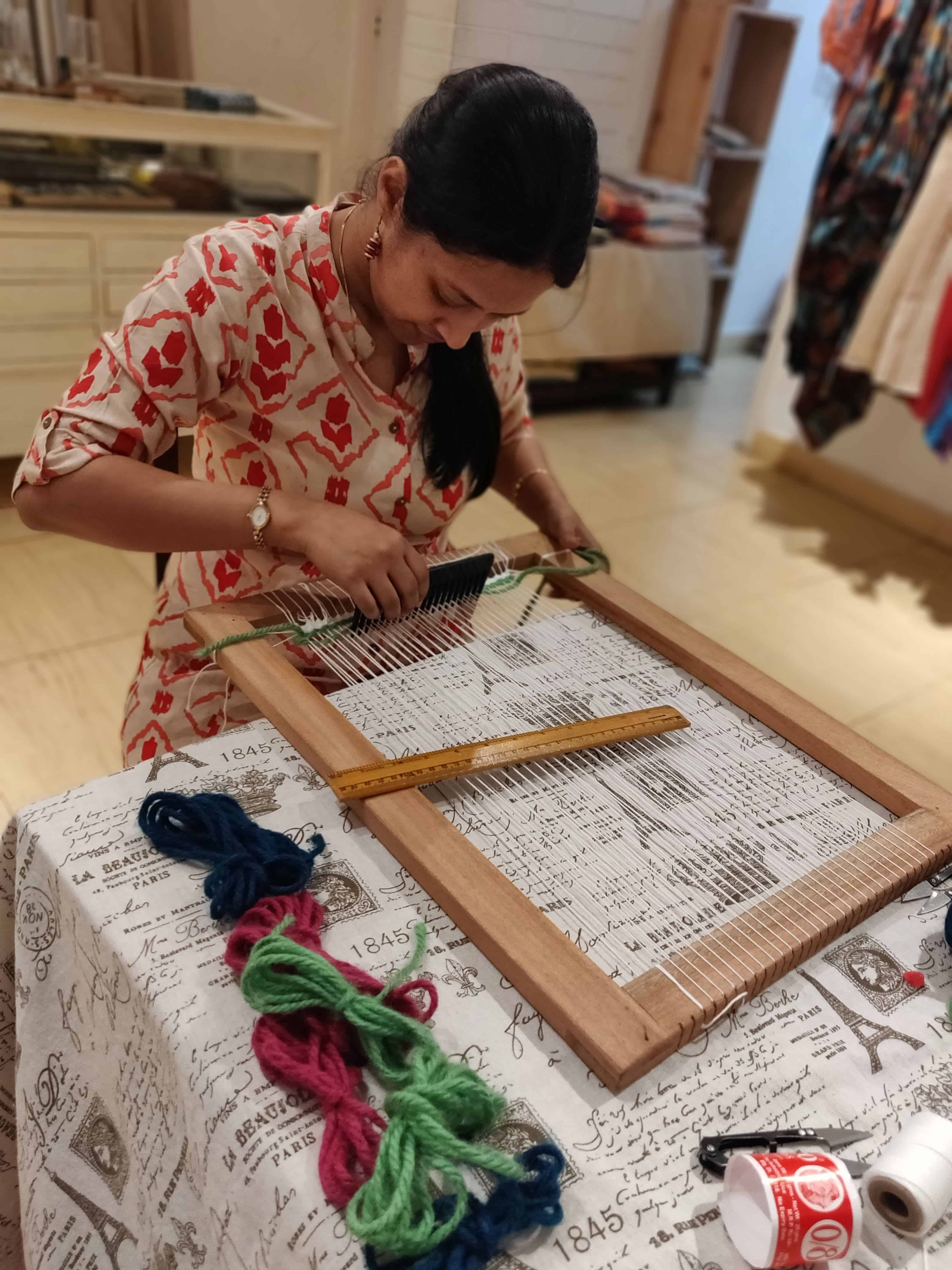
Where Did She Learn Tapestry Weaving?
Tapestry workshops were part of Julie’s course work during the 3-year textile design diploma course she did in the Sophia polytechnic in Mumbai. “While in college I loved the tapestry workshops and even took a few custom orders from friends’ parents to create a few wall arts pieces.” Julie said.
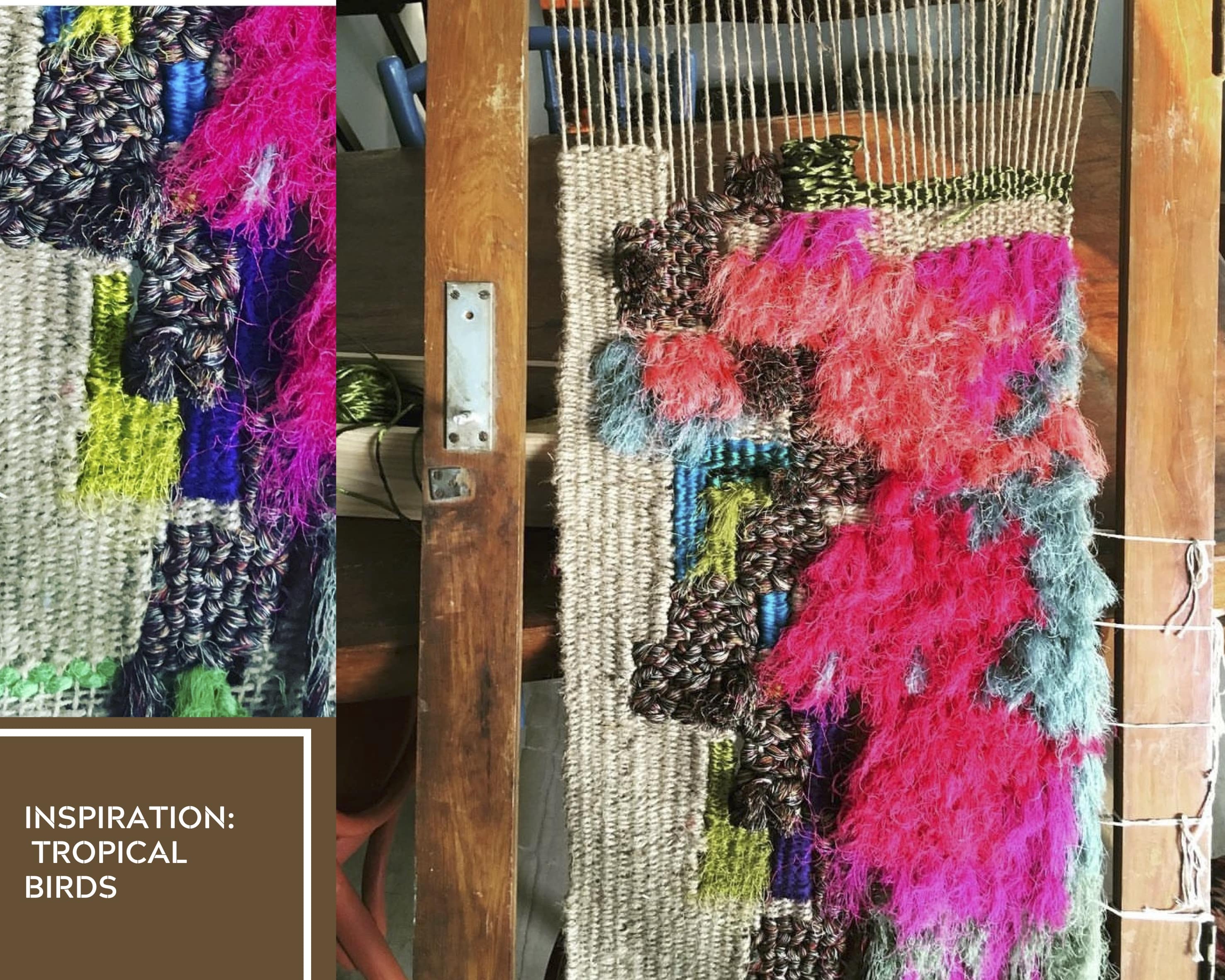
Here is one of Julie’s Tapestry Creations
“Did you know that tapestry weaving is the oldest form of weaving known to mankind? Examples of it have been found in Peru, Central Asia etc.
I feel a deep connection to this technique of weaving and also it is very versatile. It allows a weaver, especially a textile artist, to express oneself in many forms. Personally I like, and work with, natural fibers like Mulberry silk, Eri silk, Muga silk, cotton and other slub yarns. I incorporate a lot of handmade paper into my weaving too. Most of these are tapestries created for decorative purposes. I work along with interior designers who commission panels for their clients’ homes.”
Grandmother Taught her to Weave
Julie learnt weaving from her talented paternal grandmother when she was all of eight years old. In fact, she learnt by helping her grandmother on her backstrap loom. “This developed my love for the handmade, design and colors.”
This is the kind of back strap loom her grandmother used (see below). Have you seen one like this?

Art & Handicrafts Always Interested Julie
Julie was always interested in the arts and handwork. A love for color and texture is visible in her many scrapbooks and collages that she used to create as a child. Lucky for her she went on to pursue arts and design.
Used her Talent to Supply Artisanal Textiles to Retail Outlets
For a few years she was a supplier of woven cotton sarees to Fabindia, a leading store in India for handwoven garments and artisanal home decor. This was a hectic phase – coordinating with weavers in different states of India, creating artisanal textiles for clothing and stoles and so on. At the very peak she decided to take a sabbatical – for the sake of her children and for herself. She wanted to pursue her primary love – weaving and designing, while having time for family.
Introduced the Urbanites to Weaving Through Weaving Workshops
Julie designed a portable kit while staying in Mumbai where space was a constraint, which allowed her to work even when she took her children on playdates or crawled through Mumbai traffic. Once she started using the kit, she realized it was easy for the first-time weavers to use too and started conducting adult weaving workshops.
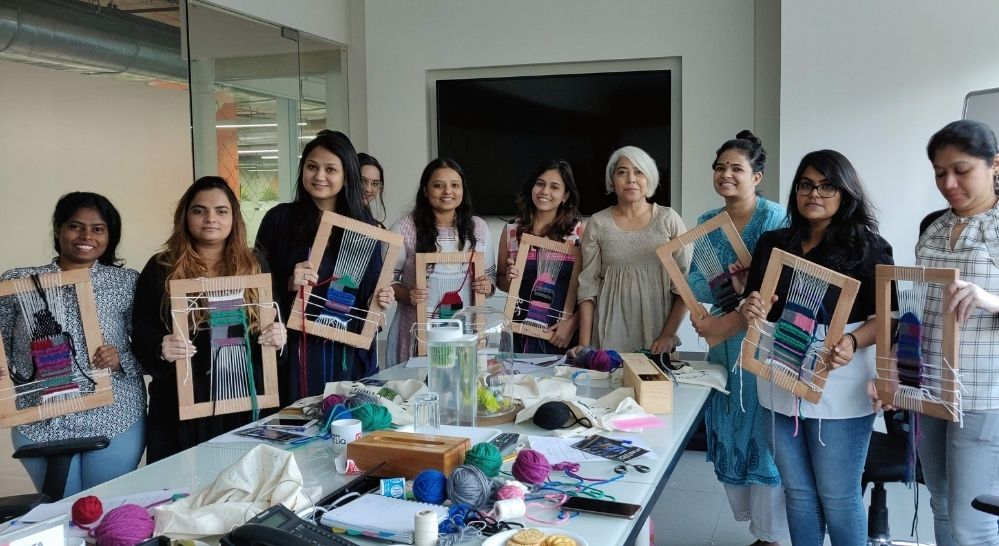
“These workshops are my way of sharing my craft and a contribution to our country’s heritage by allowing people to try their hand at this ancient art. Many people have told me that it has been an eyeopener for them as they realize how much labor goes into creating a handmade piece.
These workshops have been in art studios, private homes, design retail stores and even in fashion retail outlets. The response has been great. I have done a few workshops for corporate organization too.“
Has She Used Eri Silk Yarn to Weave?
“Yes, I have combined it with Muga silk and with linen to weave saris and stoles. I have done prototype weaving that means developing the sample weaves and then sending it to the weavers for production. Since I was creating fabrics for garments and stoles, we used finer yarn counts. All- natural yarn is best used if its pre-dyed before weaving.
I have used both handspun, and machine spun Eri silk yarn to create stoles, saris and fabric for women’s apparel. But mainly machine spun, as its more cost effective and appeals to buyers.”
How to Regenerate the Eri Silk Industry?
Like all hand-made fabrics, Eri silk industry too is under threat from mechanization and commercialization, is it not? What is Julie’s view?
“Yes, it a dying art as it is time consuming and hence expensive. It is so important to educate people about the craft, about its Eco-friendly process, and how it sustains livelihood and a heritage. Regeneration will take effort, but we need to do that.
I think Eri silk fiber will be well received by the craft hobby community and efforts should be made to spread the word out. There is a revival for hand weaving and handloom products globally, and in India. But it is still is in small numbers in India. Due to the pandemic, a lot of people are pursuing different hobbies Like knitting, crochet macramé, fiber art etc. So, the time might be right to make an effort to create awareness about Eri silk fiber.”
Does She Own Any Eri Silk Outfits?
“Yes, I own dresses and mekhela chadars (a traditional dress for women of Assam) made with Eri fabric. In winter months a sheet made of Eri silk yarn used to be put below the mattress for us to bundle up in, when I was a little girl. I still have mine and it travels with me on all my trips during the winter months, as its soft with use and provides warmth both to my body and I think comfort to my soul. In Assam the men use a large woven shawl made of Eri yarn and it looks so elegant draped.”
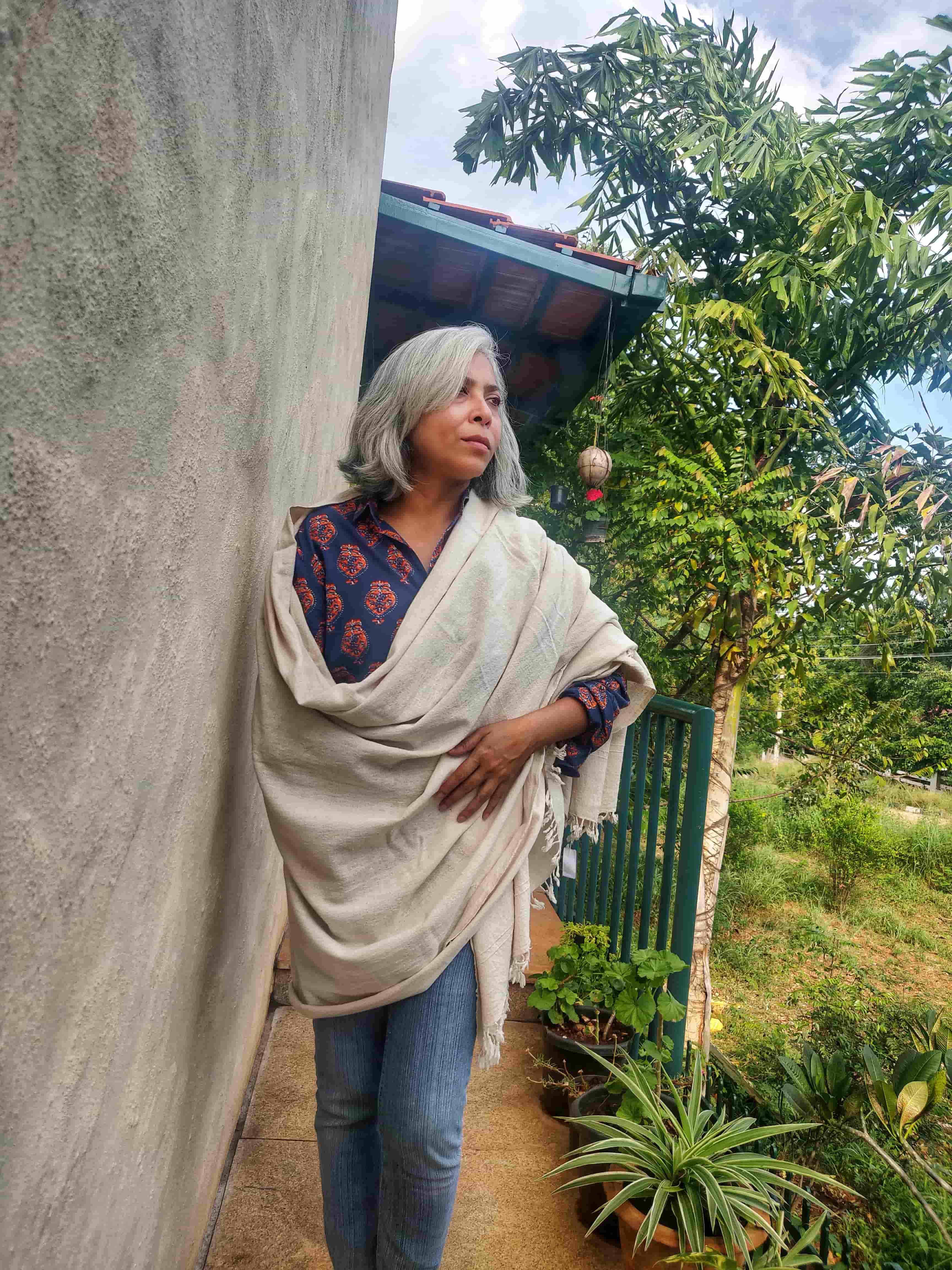
Here is Julie with her grandfather’s Eri silk shawl
What Are the Unique Features of Eri silk?
A lot of times people think it’s linen but the advantage Eri has is that it doesn’t crush as easily as linen. Eri silk doesn’t have the sheen and its texture is rough, but it is a strong fiber. Another big plus, and an important one is, Eri silk is produced through an eco-friendly, sustainable process.
“There is a need in today's world to look at what we use as consumers and how it is made. The textile industry is one of the largest pollutants of the environment. Given the rich textile heritage of India, I feel people should look at sustainable practises that actually help the environment. All the various stages and processes involved, from rearing of the worm to hand weaving of Eri yarns using natural dyes and hand spinning, are all organic. Plus, it provides income to people in the rural areas and hence addresses the issue of migration to urban areas. I think this is a huge benefit and advantage.” - Julie Kagti, Textile Artist
Handmade is Nice and Helps Conserve the Environment but Expensive, is This Viable?
“I am often asked why I promote a product like Eri hand woven fabric which is expensive. Fast fashion has many cheap products to offer but it is harming the environment which in turn affects our health like cases of asthma among children are on the rise. The processes that are sustainable for the environment are less expensive in the long run.
It also ties up with the philosophy of slow living - where we buy things not for their current demand but buy consciously products that do not harm us in the long run. I call these products the truly luxurious.”
From a Textile Artist to a Travel Venture? How Did it happen?
Julie launched a niche travel venture called Curtain Call Adventures in 2017, focused on trips in the Northeast region of India. Here is why.
“It was the love for the Northeast and its art and culture that lead me to this. This is not a run of the mill tourism venture. I see the hidden potential of the Northeast India to attract tourists who appreciate art, culture, and have an interest in getting to connect with the local communities.
During my early teens, my father resigned from his post in a refinery and started from scratch a tea plantation near Doom Dooma. Growing up in an angelized Assamese household in a tea plantation, I was introduced to the region through my father. At every given chance he would load my sisters (two, both younger than me) and me into his jeep and drive to remote corners of the northeast. That’s how I was introduced to the various tribal cultures and the diverse flora and fauna. It was then that I was smitten by the travel bug and curiosity to see how other people live. “
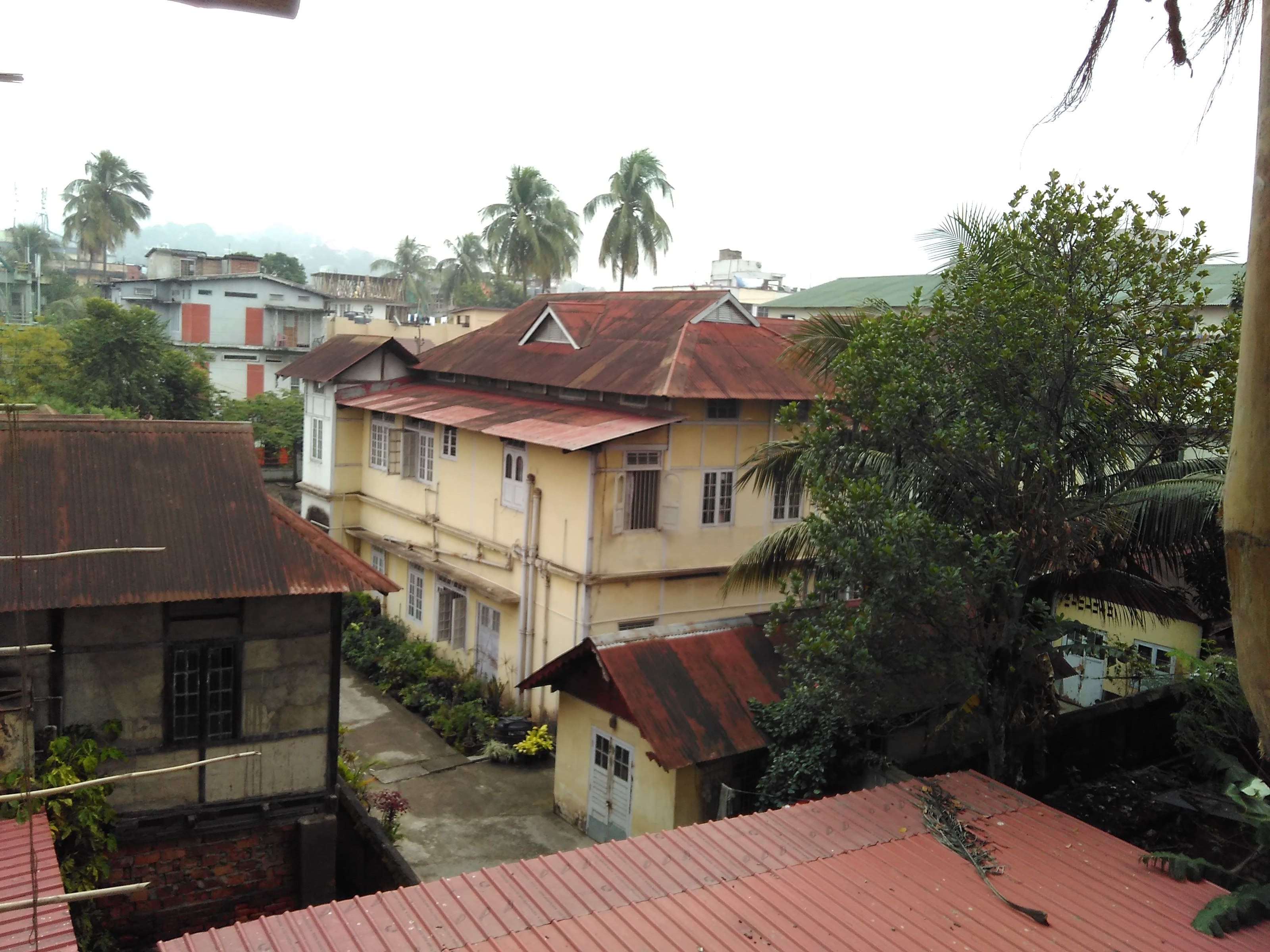
Julie Kagti Home in Assam
“I want to share the rich culture and heritage with my customers along with helping them discover the natural beauty and joy that is in abundance in the simple rustic areas of our region.”
Exploring Tours to Meghalaya – To Villages with Eri Silk Weavers
“In fact, I want to organize tours to villages of Meghalaya with Eri silk weavers and facilitate interactive workshops. This will create awareness about Meghalaya and the weavers. I think the learning can be two-way – while the workshop participants can learn from the weavers, there is a chance for the Eri silk weavers to interact with people from other parts of India who can share their interest in spinning, weaving, dyeing, and so on. The women weavers will get exposed to customers and what appeals to buyers. That will provide exposure.
I have organized 50 odd trips till early 2020. Most satisfying are the ones that involve workshops and interactions with the local communities.”
Eri Silk Spinning in Tawang, Arunachal Pradesh
We hope you enjoyed meeting Julie Kagti.
Do you have a question for Julie or for Muezart? Go ahead and ask.
Are You Interested in Weaving Workshops?
Muezart has plans to collaborate with Julie Kagti for workshops combined with exciting and exclusive trips to interior villages of Meghalaya to meet Eri silkworm rearers and weavers. Till things get back to normalcy we could consider an online workshop where all the interaction happens online and you get to see the Eri Silk Weavers in our Muezart studio, and learn weaving using specially designed weaving kits of Julie’s. Do you want to know more? Contact us.
Are you a weaver yourself and use eco-friendly fibers and want to share your story with our readers? Or you want to try our Eri Silk yarn? Buy our sample cards. Do write to us. Hope you read our post on eco-friendly fibers.


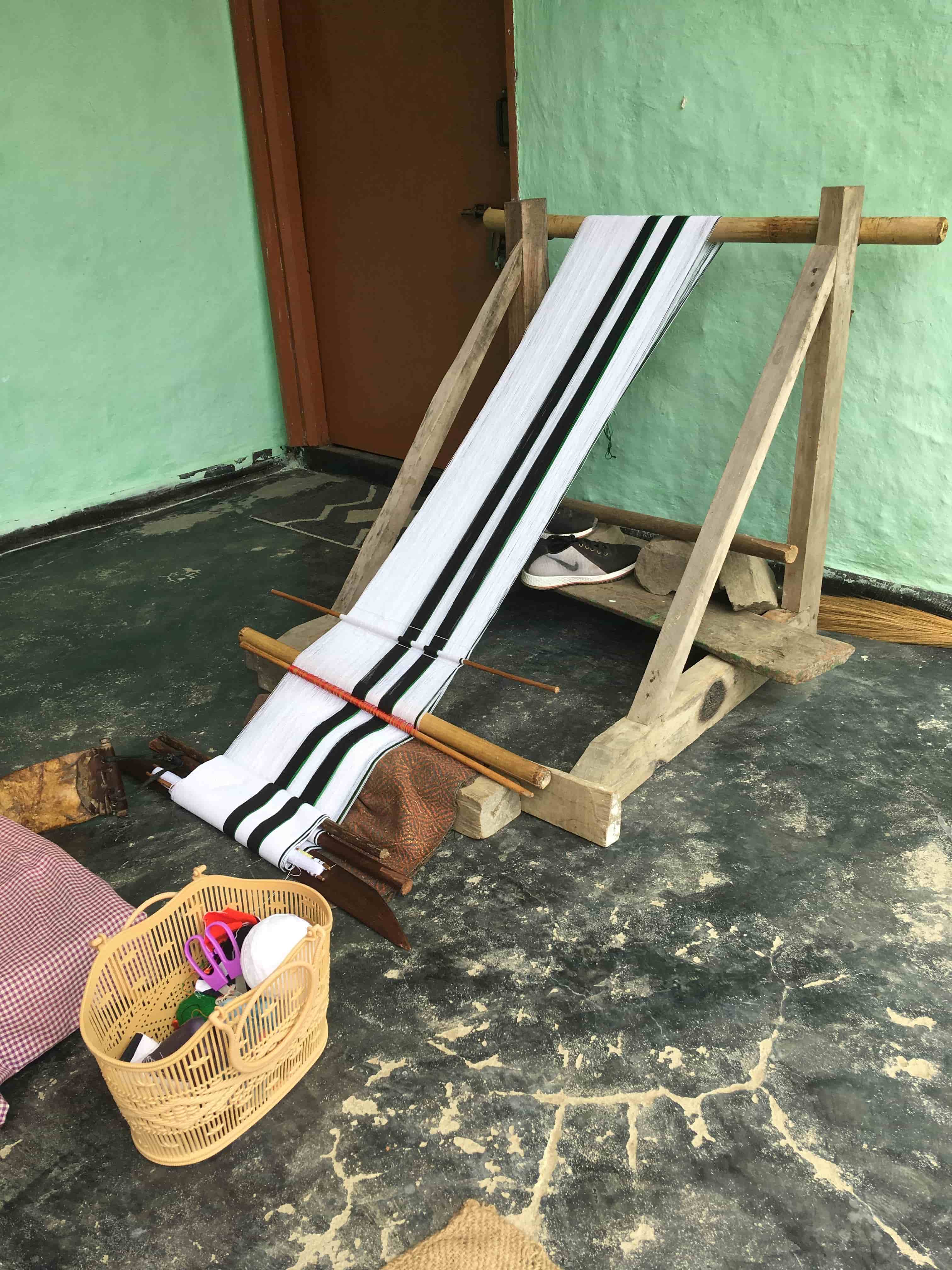
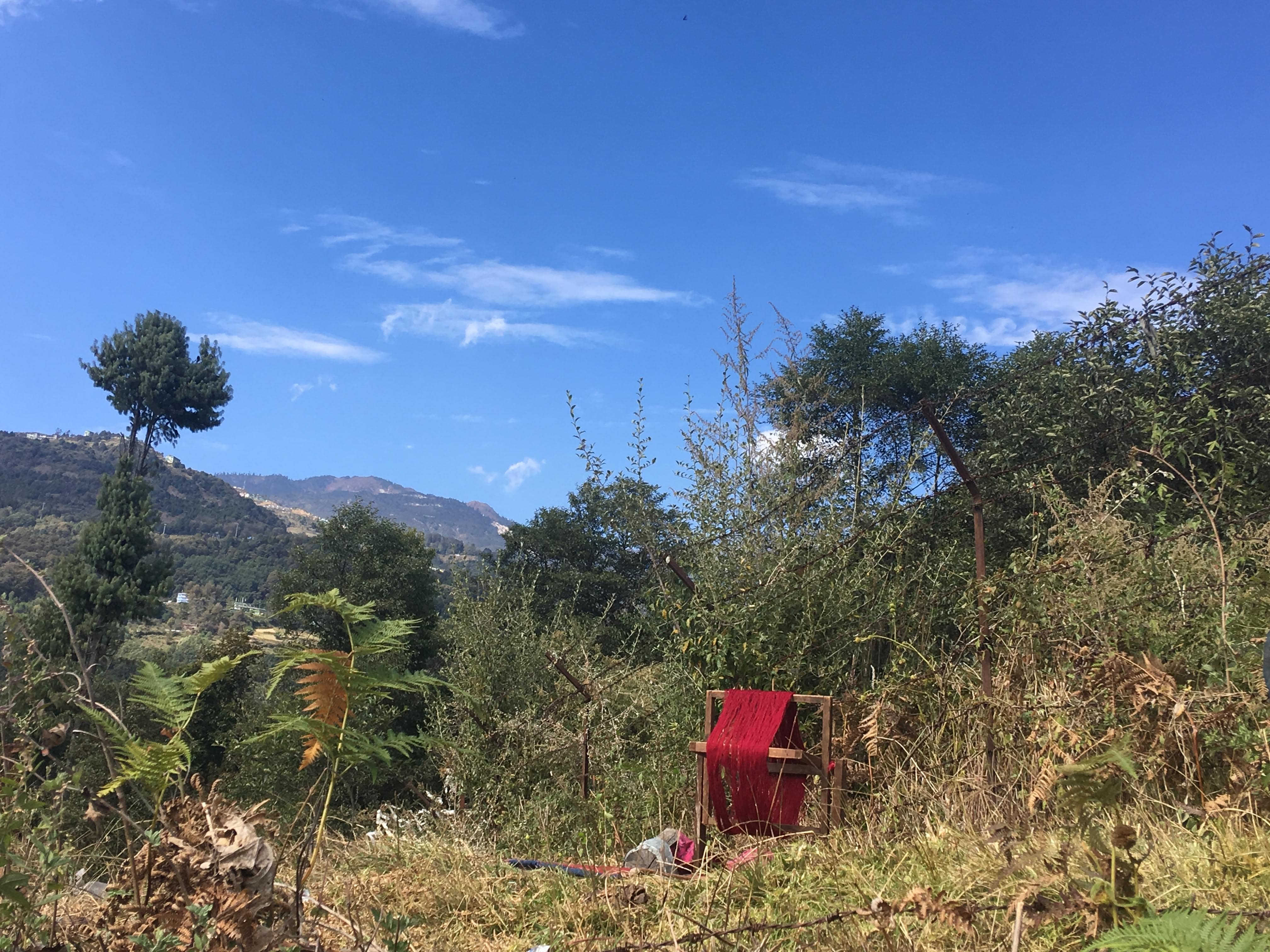
Am interested in travel and weaving workshops. Please keep me posted. Thanks
Hi I am interested in weaving workshop so kindly reply me for the same
Am interested in the weaving workshops & travel trips to Meghalaya. I have no prior experience / knowledge in weaving or textiles.
Keep me posted regarding the same.
Thanks.
I am interested in a weaving workshop and travel to other artisan locations in India.
Thank you.
Hello. Want to know more about weaving workshops.
Thank you
Regards
Balmeet
9855554260
Leave a comment